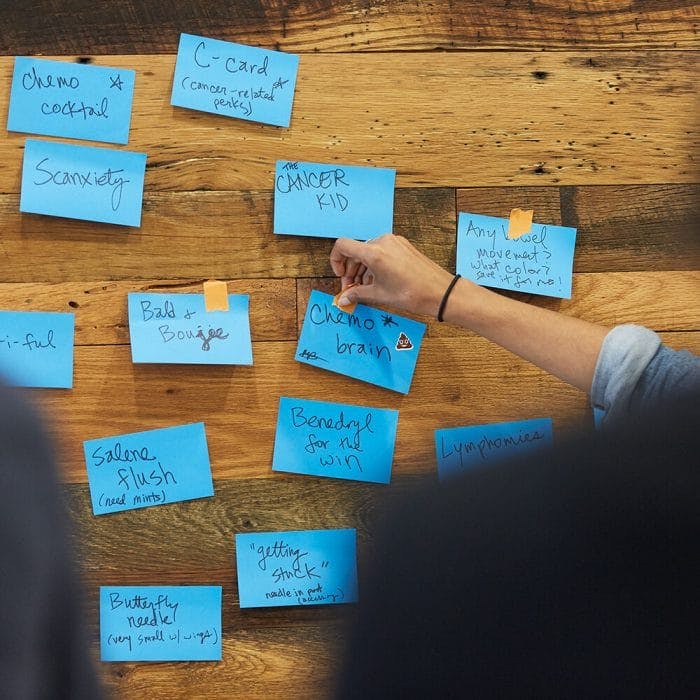In late July, our team brought together nine young cancer survivors (“AYAs”) for a retreat to identify the scenarios in which a bot could be most supportive and what the bot might specifically say to help shift the mindsets of young cancer survivors. Prior to this retreat, we had finished a round of interviews with several medical and psychosocial experts in the AYA cancer space and compared our notes with a light literature review of successful evidence-based interventions in this space. We knew (loosely) what helps AYAs build resilience – but we needed to write it in a way that felt natural and compelling to AYAs as users of the bot. Hence, the retreat – an exercise in patient (and survivor) centered design.
We expected that the weekend would be spent translating proven behavioral interventions into a conversational format with an emphasis on teen-centric slang. To do this, we added everyone to a Facebook Messenger group, where they could write “responses” to fake user inquiries and “like” each other’s responses so we knew which was most popular.
And what we learned was fascinating – our well-intentioned attempts to make our bot sound like a cool teenager were far more superficial and far less real than the actual young people we were working with. (And in fact, one of them saw a conversation example I wrote and said, “Ick! That looks like it was written by a 50 year old who googled ‘urban dictionary.’”)
In contrast, their responses were funny and contained slang, yes – but far more importantly, they were empathetic, warm, rooted in real experience, and sometimes humorous. We found that attributing real responses to AYAs actually further brought out the patient-designed nature of the tool. Below are some examples:
[When a user needs a reminder that others their age have cancer]
Bot (written by AYA): “The AYA community wants to walk, jog, run alongside you and your cancer journey. Being a young adult and having cancer is *unique*. You are not alone in this. Young adults with cancer are a SQUAD! I encourage you to reach out to young adult resources and get plugged in, some resources include (insert resources). -Lauren”
[When a user feels stir-crazy and misses working out]
Bot (written by AYA): “That’s frustrating. Is there something you can do outside, even just sitting and reading? I enjoyed doing that. -Elizabeth”




